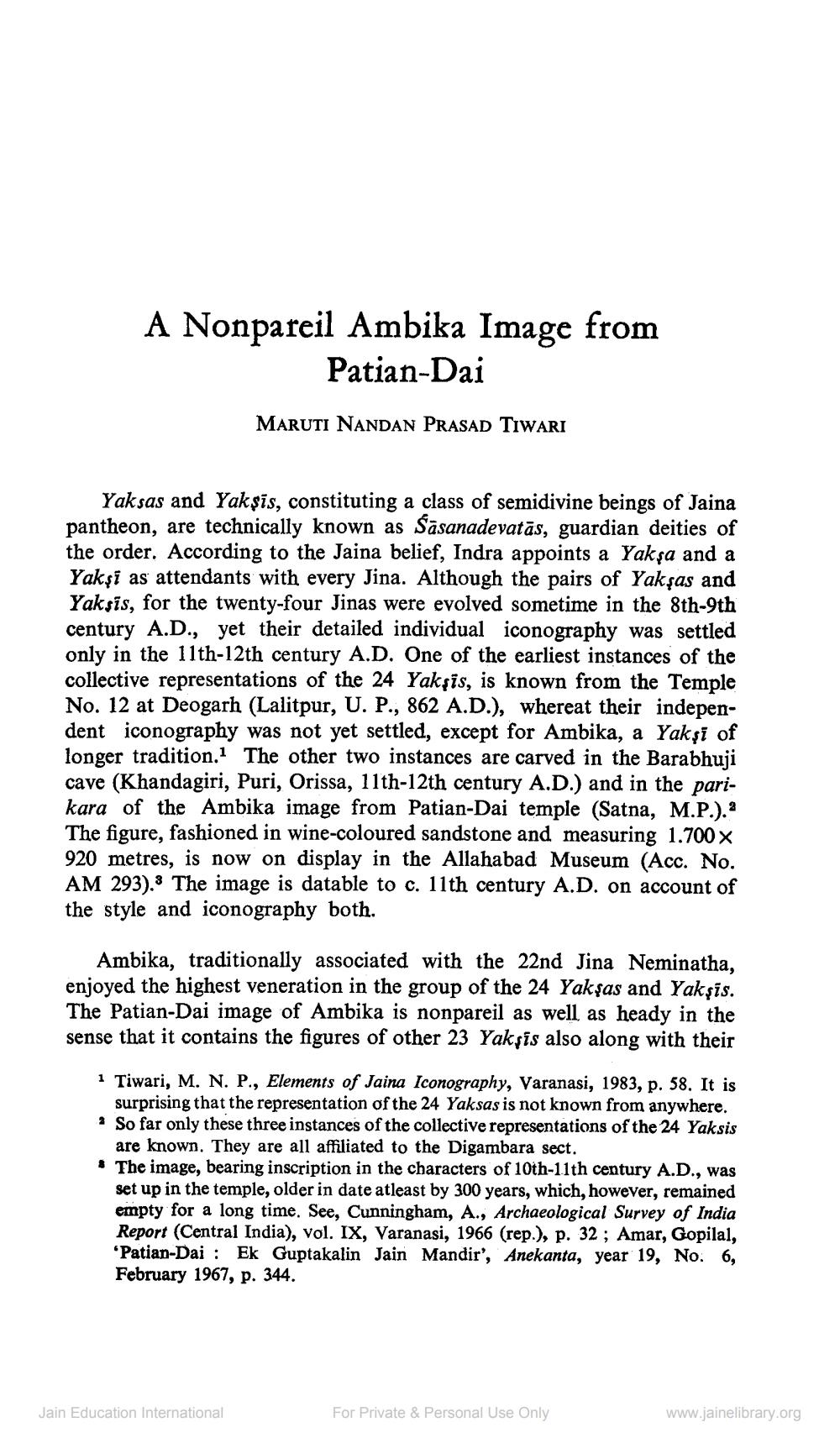Book Title: Jain Journal 1983 10 Author(s): Jain Bhawan Publication Publisher: Jain Bhawan Publication View full book textPage 5
________________ A Nonpareil Ambika Image from Patian-Dai MARUTI NANDAN PRASAD TIWARI Yaksas and Yakşīs, constituting a class of semidivine beings of Jaina pantheon, are technically known as Sāsanadevatās, guardian deities of the order. According to the Jaina belief, Indra appoints a Yakşa and a Yakşi as attendants with every Jina. Although the pairs of Yaksas and Yaksis, for the twenty-four Jinas were evolved sometime in the 8th-9th century A.D., yet their detailed individual iconography was settled only in the 11th-12th century A.D. One of the earliest instances of the collective representations of the 24 Yaksis, is known from the Temple No. 12 at Deogarh (Lalitpur, U. P., 862 A.D.), whereat their independent iconography was not yet settled, except for Ambika, a Yakşi of longer tradition. The other two instances are carved in the Barabhuji cave (Khandagiri, Puri, Orissa, 11th-12th century A.D.) and in the parikara of the Ambika image from Patian-Dai temple (Satna, M.P.)." The figure, fashioned in wine-coloured sandstone and measuring 1.700 × 920 metres, is now on display in the Allahabad Museum (Acc. No. AM 293). The image is datable to c. 11th century A.D. on account of the style and iconography both. Ambika, traditionally associated with the 22nd Jina Neminatha, enjoyed the highest veneration in the group of the 24 Yaksas and Yaksis. The Patian-Dai image of Ambika is nonpareil as well as heady in the sense that it contains the figures of other 23 Yakşis also along with their 1 Tiwari, M. N. P., Elements of Jaina Iconography, Varanasi, 1983, p. 58. It is surprising that the representation of the 24 Yaksas is not known from anywhere. So far only these three instances of the collective representations of the 24 Yaksis are known. They are all affiliated to the Digambara sect. The image, bearing inscription in the characters of 10th-11th century A.D., was set up in the temple, older in date atleast by 300 years, which, however, remained empty for a long time. See, Cunningham, A., Archaeological Survey of India Report (Central India), vol. IX, Varanasi, 1966 (rep.), p. 32; Amar, Gopilal, 'Patian-Dai Ek Guptakalin Jain Mandir', Anekanta, year 19, No. 6, February 1967, p. 344. Jain Education International For Private & Personal Use Only www.jainelibrary.orgPage Navigation
1 ... 3 4 5 6 7 8 9 10 11 12 13 14 15 16 17 18 19 20 21 22 23 24 25 26 27 28 29 30 31 32 33 34 35
